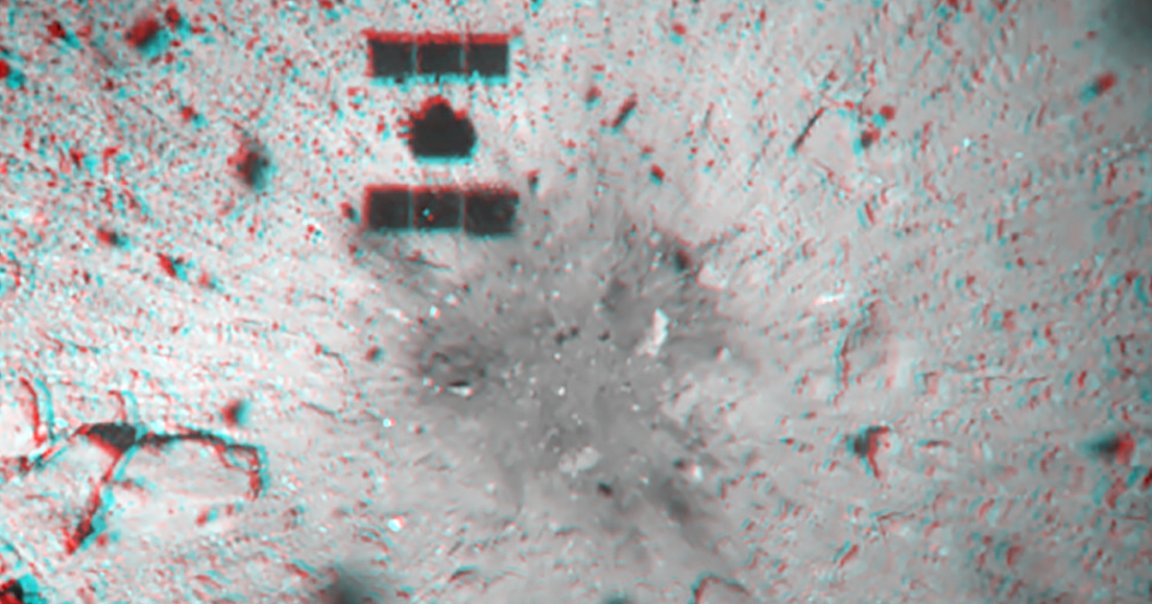
Big Blast
On April 4, a Japanese spacecraft launched a plastic explosive at an asteroid, then headed for the other side of the rock to avoid flying debris from the impact.
This week, the craft returned to the scene of the crime to check out the aftermath of the mission. As it turns out, the projectile packed more of a punch than expected — a development scientists believe could lead to a better understanding of the asteroid’s composition.
New Understanding
The Japan Aerospace Exploration Agency (JAXA) expected its Hayabusa2 spacecraft to create an artificial crater about 2 to 3 meters (6.5 to 10 feet) in diameter on the surface of the Ryugu asteroid. However, based on images collected by the probe over the past two days, the crater appears to be about 10 meters (32.8 feet) wide.
“The surface is filled with boulders but yet we created a crater this big,” Kobe University professor Masahiko Arakawa, who was involved with the project, said, according to an AFP report. “This could mean there’s a scientific mechanism we don’t know or something special about Ryugu’s materials.”
READ MORE: Japan creates first artificial crater on asteroid [Phys.org]
More on Hayabusa2: Japan Releases Video of Its Spacecraft Bombing an Asteroid